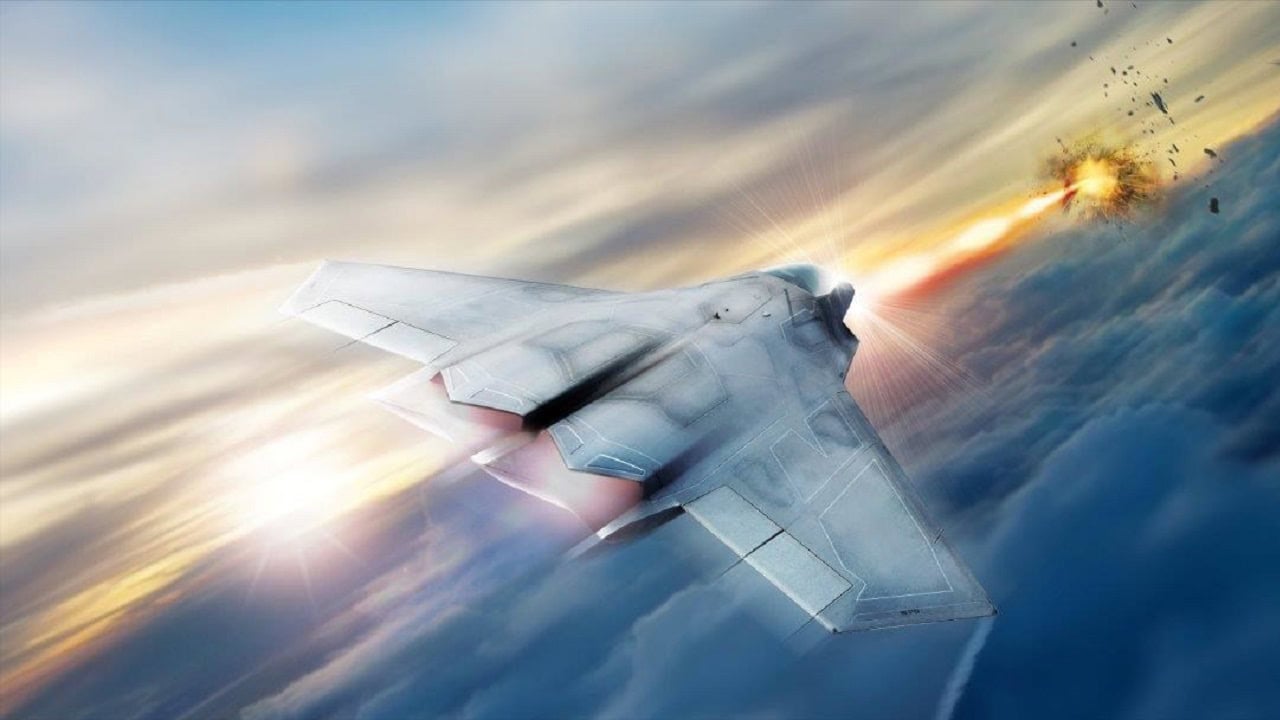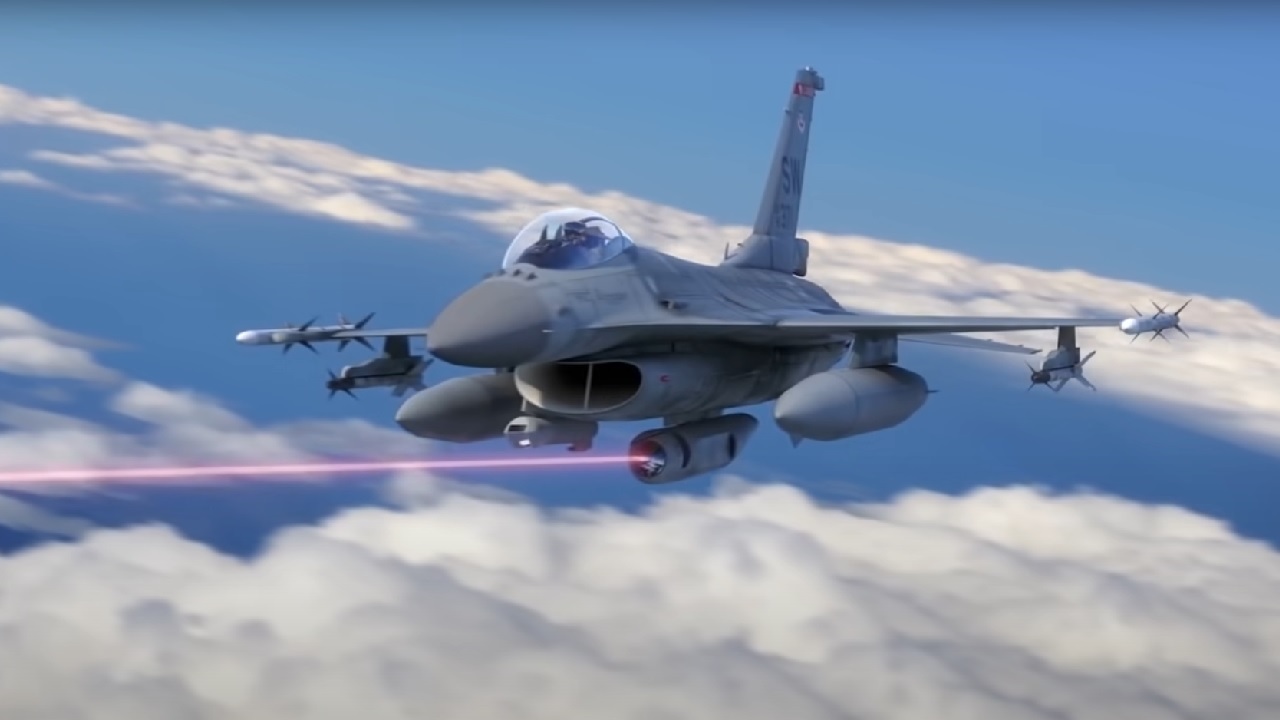One cannot discuss the future of warfare without mentioning hypersonic weapons.
There is an arms race among the United States, China, and Russia to build the best hypersonic missiles in the world. Hypersonics travel faster than MACH 5 and are maneuverable in flight.
This makes them particularly difficult for existing air defense systems to eliminate.
But that only considers conventional missile interceptors to knock out a hypersonic weapon by “hitting a bullet with a bullet.”
Lasers: Let’s Try Strategic Defense Initiative Part Two
What about using lasers along with a constellation of satellites that can give early warning on hypersonics?
This is an intuitive solution that has been tried before. In 1983, President Ronald Reagan envisioned the Strategic Defense Initiative using a space-based laser or particle-beam system to knock out enemy Intercontinental Ballistic Missiles.
The so-called “Star Wars” system never came to complete fruition, but it did enough to scare the Soviet Union into thinking that the United States had a strategic and tactical advantage if it came to nuclear war.
Tracking Hypersonics Is Difficult
Using lasers in the 21st century to combat hypersonic weapons will be equally challenging. The high speed of hypersonics is a huge advantage, along with their maneuverability, and they could outfox the best laser system.
Hypersonic weapons are difficult to track because they travel from “one radar aperture or field of regard to another so quickly,” as 19Forty-Five’s Kris Osborn explained.
Cross-country Deployment and High Proliferation on the U.S. Coastline
Since lasers go at the speed of light, it would stand to reason that they could work.
They must be mounted on mobile launchers and deployed nationwide, especially on coastlines.
The lasers would generate immense heat that would endanger human operators.
Command and control vehicles or installations must be far from directed energy systems.
An advantage of lasers is that “shots” are unlimited and cheap once the system is constructed and deployed. This gives them an advantage over conventional missile interceptors.
The U.S. Navy is finding that current supplies of interceptors are dwindling because the Houthi rebels in Yemen are launching so many adversarial missiles and drones at naval ships that a laser system would be a needed addition to air defenses.
It’s All About High Levels of Energy to Power the Directed Energy Systems
So, the U.S. Missile Defense Agency is working with the Navy to create a laser-based air defender for ships.
However, ship-borne directed energy requires an inordinate amount of electrical power, and new designers must reduce these power needs to a level that allows naval vessels to create onboard.
As Osborn noted, this would “require new methods of energy management, energy storage, and energy distribution.”
That is why the new DDG(X) destroyer has a planned Integrated Power and Energy System (IPES) that would have the ability to energize the directed energy system on board. IPES can also power the radars, sensors, and other weapons on the DDG(X).
The DDG(X) is not expected to enter service until the 2030s and is prohibitively expensive.
However, IPES could be used by other parts of the U.S. military to create the energy needed to power land-based laser systems to combat hypersonics.
Unfortunately, the laser that could take out a hypersonic missile would require 1,000 kilowatts of energy. The navy can already use existing laser systems to burn through small ships or aircraft. This takes only 100 kilowatt weapons.
For example, destroying a medium-size drone would take a sustained laser burst of at least 15 seconds.
Hypersonic defense with lasers would require “three times the power output of today’s most advanced tactical laser system… but even such a laser would likely struggle to burn through the nosecone of a hypersonic missile. After all, these weapons are designed to withstand temperatures in excess of 1,700 degrees,” according to Sandboxx News.
Cost Would Be Prohibitive
The problem that the Navy is encountering is the cost of missile defense.
The hypersonic laser defenders would be more expensive than simply using a current interceptor controlled by the existing Aegis Combat System.
Aegis would have to be updated to integrate such a large laser that sucks up so much power.

Lockheed Martin is helping the Air Force Research Lab develop and mature high energy laser weapon systems, including the high energy laser pictured in this rendering. Credit: Air Force Research Lab (PRNewsfoto/Lockheed Martin)
The other issue is maintaining a constant line of sight for the laser. Conventional missile defenders do not need a constant line of sight.
Lasers need ample time to burn through a target. “Hypersonic weapons like China’s DF-ZF may be traveling at 2 miles per second or even faster, meaning there would be precious little time to actually destroy the weapon by the time it appeared in the lasers’ line of sight,” Sandboxx News wrote.
So, lasers have a long way to go when eliminating hypersonic weapons. They generate immense amounts of heat that would negatively affect ground control stations.
They need robust energy systems that take up inordinate amounts of room and electricity on ships. Lasers also must have a clear line of sight for a successful shot that could last up to 15 seconds.
That doesn’t mean the U.S. military should stop trying. Technology will keep advancing, and energy efficiencies will improve. I would not discount the future efficacy of anti-hypersonic missile systems with lasers.
They could eliminate the ultra-fast-moving projectiles someday and would be a valuable missile defense capability for the next decades of warfare. “Star Wars” may have another sequel when a different president looks to the future as Reagan did.
About the Author: Dr. Brent M. Eastwood
Brent M. Eastwood, PhD, is the author of Don’t Turn Your Back On the World: a Conservative Foreign Policy and Humans, Machines, and Data: Future Trends in Warfare, plus two other books. Brent was the founder and CEO of a tech firm that predicted world events using artificial intelligence. He served as a legislative fellow for U.S. Senator Tim Scott and advised the senator on defense and foreign policy issues. He has taught at American University, George Washington University, and George Mason University. Brent is a former U.S. Army Infantry officer. He can be followed on X @BMEastwood.

